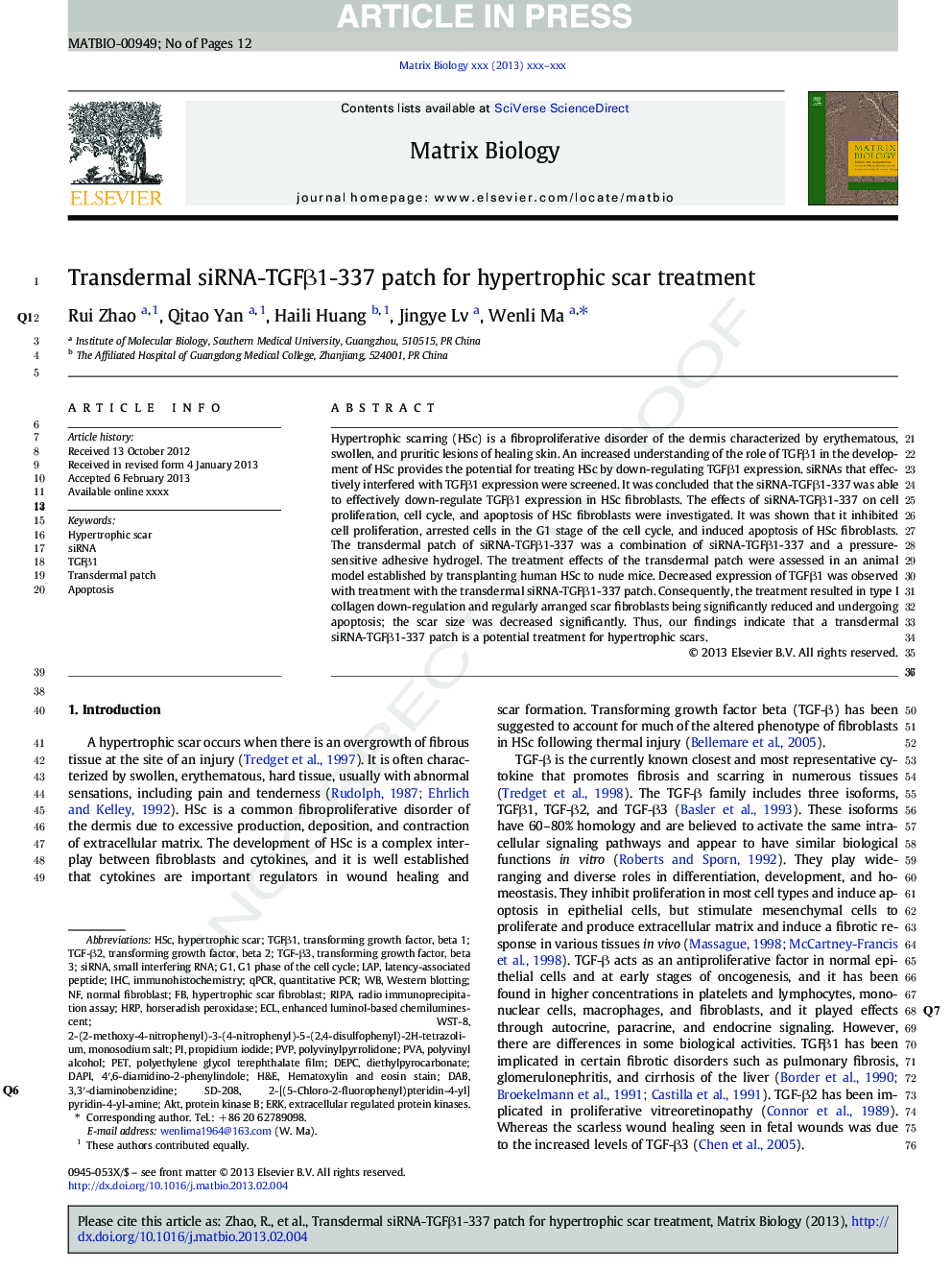| Article ID | Journal | Published Year | Pages | File Type |
|---|---|---|---|---|
| 10913836 | Matrix Biology | 2013 | 12 Pages |
Abstract
Hypertrophic scarring (HSc) is a fibroproliferative disorder of the dermis characterized by erythematous, swollen, and pruritic lesions of healing skin. An increased understanding of the role of TGFβ1 in the development of HSc provides the potential for treating HSc by down-regulating TGFβ1 expression. siRNAs that effectively interfered with TGFβ1 expression were screened. It was concluded that the siRNA-TGFβ1-337 was able to effectively down-regulate TGFβ1 expression in HSc fibroblasts. The effects of siRNA-TGFβ1-337 on cell proliferation, cell cycle, and apoptosis of HSc fibroblasts were investigated. It was shown that it inhibited cell proliferation, arrested cells in the G1 stage of the cell cycle, and induced apoptosis of HSc fibroblasts. The transdermal patch of siRNA-TGFβ1-337 was a combination of siRNA-TGFβ1-337 and a pressure-sensitive adhesive hydrogel. The treatment effects of the transdermal patch were assessed in an animal model established by transplanting human HSc to nude mice. Decreased expression of TGFβ1 was observed with treatment with the transdermal siRNA-TGFβ1-337 patch. Consequently, the treatment resulted in type I collagen down-regulation and regularly arranged scar fibroblasts being significantly reduced and undergoing apoptosis; the scar size was decreased significantly. Thus, our findings indicate that a transdermal siRNA-TGFβ1-337 patch is a potential treatment for hypertrophic scars.
Keywords
PVAECLDAPIDEPCRIPATGF-β2LAPERKHRPTGF-β3PVPqPCRTGFβ1DABWST-8HSCtransforming growth factor, beta 12-(2-methoxy-4-nitrophenyl)-3-(4-nitrophenyl)-5-(2,4-disulfophenyl)-2H-tetrazolium, monosodium salt3,3′-diaminobenzidine4′,6-diamidino-2-phenylindoleH&EQuantitative PCRSmall interfering RNAsiRNARadio immunoprecipitation assayAktHypertrophic scarIHCImmunohistochemistryApoptosisdiethylpyrocarbonatehematoxylin and eosin stainnormal fibroblastWestern blottingPETHorseradish peroxidaseprotein kinase Bextracellular regulated protein kinasesPropidium iodidepolyvinyl alcoholpolyvinylpyrrolidonelatency-associated peptideTransdermal patch
Related Topics
Life Sciences
Biochemistry, Genetics and Molecular Biology
Cancer Research
Authors
Rui Zhao, Qitao Yan, Haili Huang, Jingye Lv, Wenli Ma,
